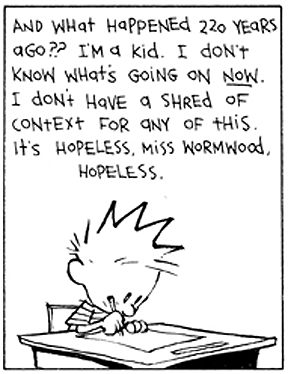Recently, we were asked to focus on
ways that we could better integrate art into our history lessons. Naturally, my mind went directly to actual
art and I eagerly designed an “Art Walk” that would require students to analyze
and interpret various paintings, advertisements, and pictures from the time
period that we would be studying. I am
still excited about the project, and I’m busy creating a Webquest to support
it, but now that I have some time separating me from the actual requirement of
the assignment, I find myself coming up with more thoughts and ideas concerning
the topic of integrating art into my lesson plans and, perhaps more
importantly, what is “art”.
As anyone
in education is well aware, April is National Poetry month and it usually marks
a time in the LA curriculum where students are immersed in figurative language
and rhyming. For the past 5 years my son’s
school has worked hard to create a week long program where students are exposed
to multiple forms of poetry and even treated to a “Poet in Residence”. This year’s poet was Richard Blanco, the 2013
Inaugural Poet and Maine
resident. I was able to attend the final
evening’s events where Mr. Blanco spoke to the public and read many of his own
pieces. I left that night fully aware
that I had been in the presence of a true artist. After being brought to tears numerous times,
I realized that I had totally forgotten about the spoken word being an art-form
that could/should be incorporated into my lessons.
To that
point, Mr. Blanco is a wonderful example of how poetry and art can be
integrated into all subjects. Even
though he has published many books of poetry and two memoirs, Mr. Blanco is
actually a trained and practicing Civil Engineer. He stressed through his talks to the students,
and later to the public present for the final night, the importance of exposure
to all subjects and the dangers of overexposure to just one area. In his own words, he’s a better Civil
Engineer because he is a poet and a better Poet because he is an engineer. The Washington Post recently ran an article titled
"Why America's Obsession with STEM Education is Dangerous", that
speaks to just this point--the way to make students true innovators and
learners is to expose them to Science, Math, and Engineering, but not at the expense
of the liberal arts. As the article’s author states, “Innovation is not simply
a technical matter but rather one of understanding how people and societies
work, what they need and want.
America
will not dominate the 21st century by making cheaper computer chips but instead
by constantly re-imagining how computers and other new technologies interact
with human beings.”
After my
evening listening and learning from Mr. Blanco, I was reminded of other famous individuals
that have successfully embraced science and art: Leonardo Da Vinci (artist and
inventor), Thomas Jefferson (architecture, music, meteorology), William Carolos
Williams (Poet and Pediatrician), Lewis Thomas (Physician, author, Naturalist),
Frank Lloyd Write (Architect, artist). How
wonderful would it be to examine this list further? There are so many more names to add to it,
such a wonderful angle to examine. We
learn Social Studies, Math, Art, English, etc., not so we can become Historians,
Mathematicians, Scientists, or Artists some day, but to expose us to as much
learning as possible so that we can truly figure out what inspires us, what
interests us, and how to do it to the best of our ability. It all works together; the science, the art,
the history, the language arts. I come
away from my experience with poetry with many inspirations of how to integrate
art into the Social Studies curriculum beyond simply examining poetry/storytelling
from whatever time period we are studying.
The content of the poems, just like the subject of the artwork, or words
of the songs, tells a story about that moment in history, certainly--beyond that is the importance of
the storytelling, the poetry, the artwork, to science, math, and engineering.
Richard Blanco reciting his Inaugural Poem, "One Today":




